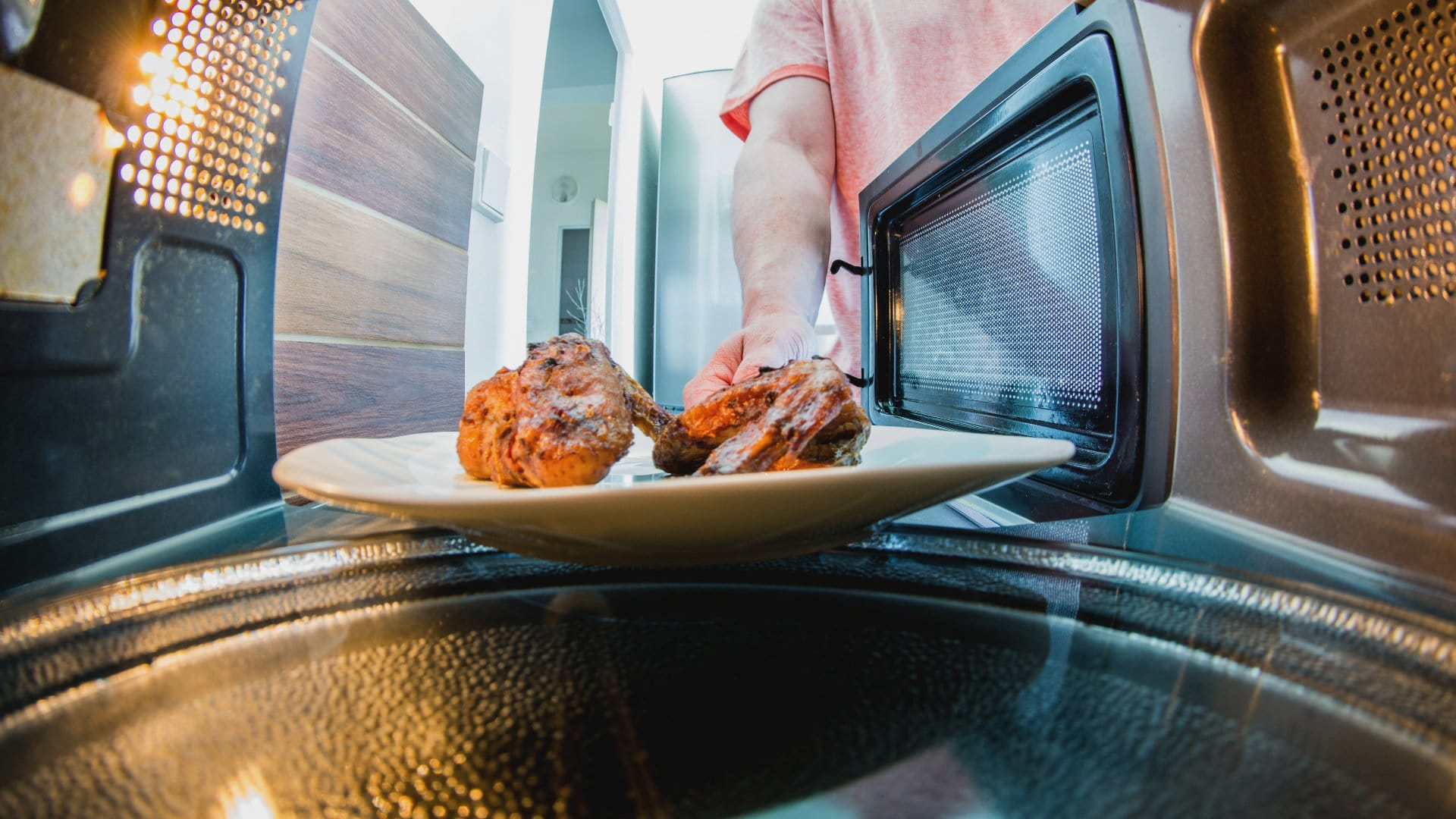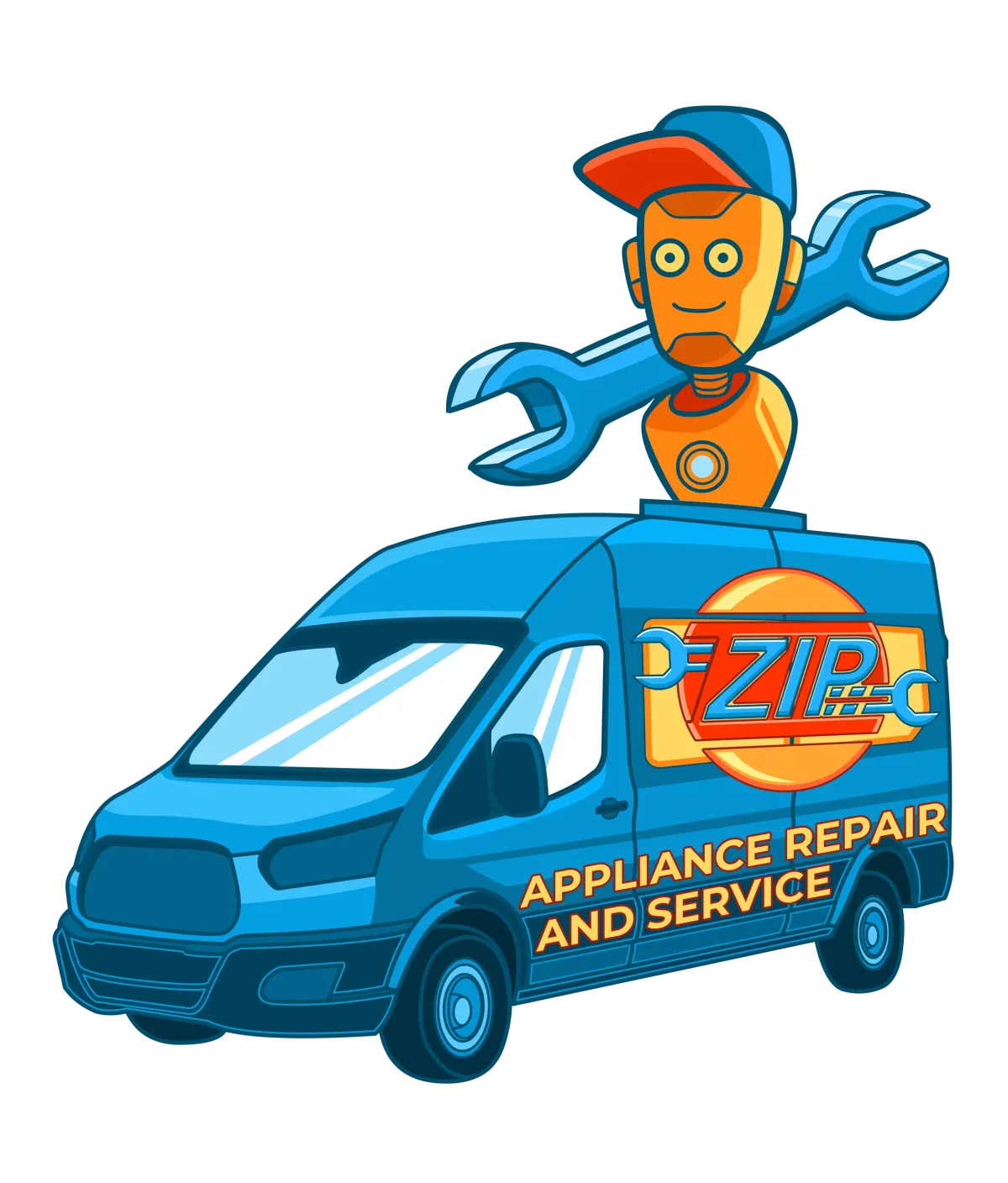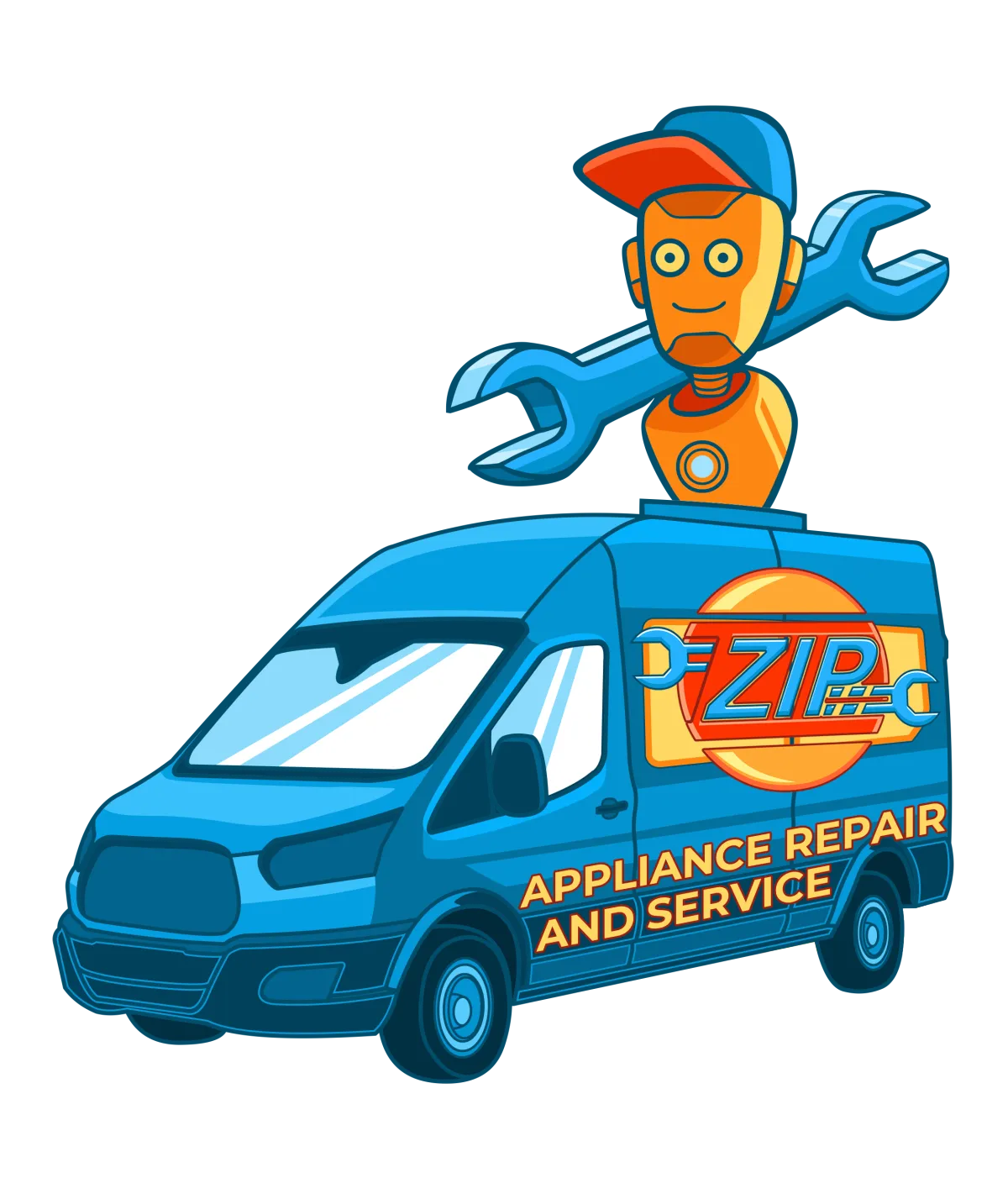THE FASTEST TOOLS IN TOWN
ZIP APPLIANCE REPAIR & SERVICE
Phone: (559) 272-4265
Phone: (559) 272-4265
Appliance Repair Tips For Fresno, CA Residents

Easy Ways to Fix a Microwave Door That Won’t Close Properly
"A properly closing microwave door is key to safety and efficiency. Don't let a simple issue disrupt your kitchen—learn how to fix it with ease!" - Appliance Boss
Introduction
A microwave is one of the most frequently used appliances in any kitchen, making it incredibly frustrating when something as simple as a faulty door prevents it from functioning. A microwave door that won’t close properly can interrupt meal prep, waste energy, and even pose safety risks.
Ignoring this issue could lead to bigger problems, from electrical malfunctions to complete breakdowns. Whether it’s a minor obstruction or a worn-out component, addressing the problem sooner rather than later can save you both time and money.
Understanding the Importance of a Properly Closing Microwave Door
How a Loose Door Affects Microwave Performance and Safety
A securely closed microwave door is essential for proper operation. If the door doesn’t latch properly, the appliance might not start or may stop midway through heating. Worse yet, an ill-fitting door can allow microwave energy to escape, reducing heating efficiency and potentially causing harm.

The Risk of Radiation Leakage from a Misaligned Microwave Door
Microwaves operate by emitting electromagnetic waves to heat food. The door is designed to contain these waves, ensuring safe usage. A misaligned or damaged door can lead to leakage, which, while minimal, could pose long-term health risks with prolonged exposure.
Why a Broken Microwave Door Can Cause Electrical Malfunctions
A door that doesn’t close properly might interfere with the microwave’s internal safety mechanisms. The appliance may keep shutting off or refuse to start. Additionally, repeated forceful closing of the door to make it work can strain internal wiring, leading to electrical issues.
Common Causes of a Microwave Door That Won’t Close Properly
Worn-Out Door Latch: The Small Part That Makes a Big Difference
The door latch is responsible for locking the door in place. Over time, frequent use can wear down this component, preventing the door from securing properly. If the latch is broken or misaligned, the microwave may fail to function.
Hinge Misalignment: When Your Microwave Door Won’t Stay in Place
Microwave hinges endure constant stress, and any misalignment can cause the door to sit incorrectly. This can prevent the door from latching securely, leading to operational failures.
Obstructed Door Seal: Dirt and Debris Might Be the Culprit
Grease, food particles, and debris can accumulate around the door seal, making it difficult to close properly. A simple buildup of grime may be enough to interfere with the latch mechanism, preventing the door from sealing.
Broken or Loose Springs: How They Impact Door Functionality
Some microwave doors rely on internal springs to assist in opening and closing. If these springs become loose or break, the door may not fully close or may pop open unexpectedly.
Warped Microwave Frame: A Structural Issue That Affects Closure
Microwave doors are designed to fit snugly against the frame. If the unit has been dropped, hit, or exposed to excessive heat, the frame can warp slightly, making it difficult for the door to align correctly.
Easy DIY Fixes for a Microwave Door That Won’t Close Properly
Checking for Food Debris Blocking the Door Seal
Before attempting any repairs, inspect the door seal for crumbs, grease, or other obstructions. A simple wipe-down with a damp cloth and mild detergent can resolve the issue in seconds.
Realigning the Microwave Door with Simple Adjustments
If the door appears misaligned, gently adjust the hinges by loosening the screws slightly and repositioning the door. Tighten them back in place to secure the alignment.
Inspecting and Tightening Loose Hinges for a Better Fit
Use a screwdriver to check the door hinges for looseness. Tightening these screws can restore the door’s proper fit and improve its ability to latch securely.
Replacing a Faulty Door Latch for a Secure Closure
If the latch is visibly worn or broken, it may need to be replaced. Most microwave latches can be purchased online or from appliance stores and swapped out with basic tools.
Fixing or Replacing Broken Springs for Smooth Operation
For models that use door springs, replacing a broken spring can restore the door’s tension and prevent it from hanging open. Refer to the user manual to locate and replace the springs as needed.
When to Seek Professional Help
Signs Your Microwave Door Issue Is Beyond a DIY Fix
If you’ve tried cleaning, tightening, and replacing simple components but the door still won’t close properly, there may be a deeper mechanical issue requiring professional attention.
The Cost of Professional Microwave Door Repair vs. Replacement
In some cases, repairing a broken microwave door can cost almost as much as a new unit. If the repairs exceed half the price of a new microwave, it may be more cost-effective to replace the appliance.
How a Technician Can Diagnose Complex Door Issues
A professional technician can inspect the unit for structural damage, faulty wiring, or internal malfunctions that may not be visible to the average user. They can also ensure repairs comply with safety regulations.
Preventing Future Microwave Door Problems
Routine Cleaning to Keep the Door Seal Free of Debris
Wiping down the microwave door and seal after each use prevents food buildup, reducing the risk of obstructions that could prevent the door from closing.
Gentle Handling to Prevent Wear and Tear on Hinges and Latches
Slamming the microwave door shut can damage the latch and hinges over time. Close the door gently to extend the life of these essential components.
Regular Maintenance Checks to Ensure Long-Term Durability
Periodically inspecting hinges, latches, and the door seal for signs of wear can help catch minor issues before they become bigger problems.
Best Practices to Extend the Life of Your Microwave Door
Avoid using excessive force when opening or closing the door. Also, make sure the microwave is sitting on a stable surface to prevent unnecessary strain on the door frame.
Conclusion
A microwave door that won’t close properly is a frustrating issue, but in most cases, it’s an easy fix. By identifying the root cause—whether it’s a dirty seal, a misaligned hinge, or a worn-out latch—you can take the necessary steps to restore your microwave’s functionality.
For quick fixes, simple DIY solutions like cleaning the seal, tightening hinges, or replacing the latch can do the trick. However, if the issue persists or involves complex internal damage, seeking professional repair is the safest option.
By following these troubleshooting steps and maintaining your microwave properly, you can ensure its longevity and efficiency, keeping your kitchen running smoothly.
If you need professional repair services, Zip Appliance Repair and Service is here to help. Our expert technicians can diagnose and fix microwave door issues quickly and affordably. Contact us today at (559) 272-4265 or visit our website at fresno.ziprepairservice.com/ to schedule a service appointment.

Easy Ways to Fix a Microwave Door That Won’t Close Properly
"A properly closing microwave door is key to safety and efficiency. Don't let a simple issue disrupt your kitchen—learn how to fix it with ease!" - Appliance Boss
Introduction
A microwave is one of the most frequently used appliances in any kitchen, making it incredibly frustrating when something as simple as a faulty door prevents it from functioning. A microwave door that won’t close properly can interrupt meal prep, waste energy, and even pose safety risks.
Ignoring this issue could lead to bigger problems, from electrical malfunctions to complete breakdowns. Whether it’s a minor obstruction or a worn-out component, addressing the problem sooner rather than later can save you both time and money.
Understanding the Importance of a Properly Closing Microwave Door
How a Loose Door Affects Microwave Performance and Safety
A securely closed microwave door is essential for proper operation. If the door doesn’t latch properly, the appliance might not start or may stop midway through heating. Worse yet, an ill-fitting door can allow microwave energy to escape, reducing heating efficiency and potentially causing harm.

The Risk of Radiation Leakage from a Misaligned Microwave Door
Microwaves operate by emitting electromagnetic waves to heat food. The door is designed to contain these waves, ensuring safe usage. A misaligned or damaged door can lead to leakage, which, while minimal, could pose long-term health risks with prolonged exposure.
Why a Broken Microwave Door Can Cause Electrical Malfunctions
A door that doesn’t close properly might interfere with the microwave’s internal safety mechanisms. The appliance may keep shutting off or refuse to start. Additionally, repeated forceful closing of the door to make it work can strain internal wiring, leading to electrical issues.
Common Causes of a Microwave Door That Won’t Close Properly
Worn-Out Door Latch: The Small Part That Makes a Big Difference
The door latch is responsible for locking the door in place. Over time, frequent use can wear down this component, preventing the door from securing properly. If the latch is broken or misaligned, the microwave may fail to function.
Hinge Misalignment: When Your Microwave Door Won’t Stay in Place
Microwave hinges endure constant stress, and any misalignment can cause the door to sit incorrectly. This can prevent the door from latching securely, leading to operational failures.
Obstructed Door Seal: Dirt and Debris Might Be the Culprit
Grease, food particles, and debris can accumulate around the door seal, making it difficult to close properly. A simple buildup of grime may be enough to interfere with the latch mechanism, preventing the door from sealing.
Broken or Loose Springs: How They Impact Door Functionality
Some microwave doors rely on internal springs to assist in opening and closing. If these springs become loose or break, the door may not fully close or may pop open unexpectedly.
Warped Microwave Frame: A Structural Issue That Affects Closure
Microwave doors are designed to fit snugly against the frame. If the unit has been dropped, hit, or exposed to excessive heat, the frame can warp slightly, making it difficult for the door to align correctly.
Easy DIY Fixes for a Microwave Door That Won’t Close Properly
Checking for Food Debris Blocking the Door Seal
Before attempting any repairs, inspect the door seal for crumbs, grease, or other obstructions. A simple wipe-down with a damp cloth and mild detergent can resolve the issue in seconds.
Realigning the Microwave Door with Simple Adjustments
If the door appears misaligned, gently adjust the hinges by loosening the screws slightly and repositioning the door. Tighten them back in place to secure the alignment.
Inspecting and Tightening Loose Hinges for a Better Fit
Use a screwdriver to check the door hinges for looseness. Tightening these screws can restore the door’s proper fit and improve its ability to latch securely.
Replacing a Faulty Door Latch for a Secure Closure
If the latch is visibly worn or broken, it may need to be replaced. Most microwave latches can be purchased online or from appliance stores and swapped out with basic tools.
Fixing or Replacing Broken Springs for Smooth Operation
For models that use door springs, replacing a broken spring can restore the door’s tension and prevent it from hanging open. Refer to the user manual to locate and replace the springs as needed.
When to Seek Professional Help
Signs Your Microwave Door Issue Is Beyond a DIY Fix
If you’ve tried cleaning, tightening, and replacing simple components but the door still won’t close properly, there may be a deeper mechanical issue requiring professional attention.
The Cost of Professional Microwave Door Repair vs. Replacement
In some cases, repairing a broken microwave door can cost almost as much as a new unit. If the repairs exceed half the price of a new microwave, it may be more cost-effective to replace the appliance.
How a Technician Can Diagnose Complex Door Issues
A professional technician can inspect the unit for structural damage, faulty wiring, or internal malfunctions that may not be visible to the average user. They can also ensure repairs comply with safety regulations.
Preventing Future Microwave Door Problems
Routine Cleaning to Keep the Door Seal Free of Debris
Wiping down the microwave door and seal after each use prevents food buildup, reducing the risk of obstructions that could prevent the door from closing.
Gentle Handling to Prevent Wear and Tear on Hinges and Latches
Slamming the microwave door shut can damage the latch and hinges over time. Close the door gently to extend the life of these essential components.
Regular Maintenance Checks to Ensure Long-Term Durability
Periodically inspecting hinges, latches, and the door seal for signs of wear can help catch minor issues before they become bigger problems.
Best Practices to Extend the Life of Your Microwave Door
Avoid using excessive force when opening or closing the door. Also, make sure the microwave is sitting on a stable surface to prevent unnecessary strain on the door frame.
Conclusion
A microwave door that won’t close properly is a frustrating issue, but in most cases, it’s an easy fix. By identifying the root cause—whether it’s a dirty seal, a misaligned hinge, or a worn-out latch—you can take the necessary steps to restore your microwave’s functionality.
For quick fixes, simple DIY solutions like cleaning the seal, tightening hinges, or replacing the latch can do the trick. However, if the issue persists or involves complex internal damage, seeking professional repair is the safest option.
By following these troubleshooting steps and maintaining your microwave properly, you can ensure its longevity and efficiency, keeping your kitchen running smoothly.
If you need professional repair services, Zip Appliance Repair and Service is here to help. Our expert technicians can diagnose and fix microwave door issues quickly and affordably. Contact us today at (559) 272-4265 or visit our website at fresno.ziprepairservice.com/ to schedule a service appointment.
If your dryer has been giving you problems, contact Zip Appliance Repair & Service at (559) 272-4265

Appliance Repair In A Zip
If you need a dryer repair call our Team at (559) 272-4265, or visit our online scheduling page to request service.
Appliance Repair
HAVE A QUESTION, CALL (559) 272-4265

Online Offers
Take advantage of our online discount offers - save time and money...

Residential & Commercial appliances
See what our company can do for you

Appliance Repair Tips
If your appliance is not working properly...

1405 Commercial Way ste 100
Bakersfield, CA 93309
Lic # 1116346
Equipment We Sevice
- A Call To Confirm Your Appointment Time
- A Email Detailing Your Assigned Technician
- Information Needed Before The Repair Can Be Started
- An Estimate Of Work To Be Done
© 2025 ZIP APPLIANCE REPAIR & SERVICE LLC







